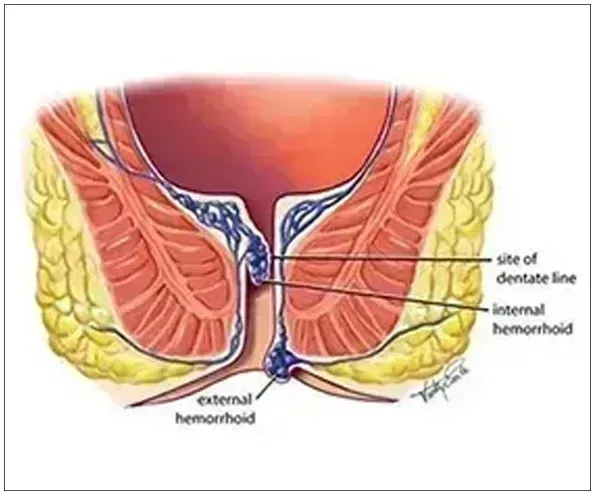


Hemorrhoids are common, but that doesn’t mean you have to live with them. Learn more about hemorrhoid symptoms here.
If you’re asking the question, “What are hemorrhoids?” you’ve come to the right place. Hemorrhoids (often misspelled as “hemroids”) are cushions of swollen tissue and blood vessels in the lower rectal area. Hemorrhoids are classified as either “internal” or “external.” External hemorrhoids can cause itching, swelling, and pain, whereas internal hemorrhoids can cause bleeding, itching, swelling, and eventually prolapse (loose tissue that bulges outside of the anus). Hemorrhoids can be caused by a number of things, including constipation, straining, pregnancy, etc., and can be unpleasant if left untreated.
Patients with external hemorrhoids often report discomfort or pain, especially during bowel movements. Symptoms may only flare up every few weeks – making it hard to tell whether your discomfort is actually hemorrhoid-related in the first place. Many of those with external disease also have symptomatic internal hemorrhoids (more information below). While only a licensed physician can give you a proper diagnosis, here are a few of the symptoms that usually indicate an external hemorrhoid problem:
Symptoms of internal hemorrhoids vary depending on their severity. Small internal hemorrhoids may only cause some light bleeding, however, when the hemorrhoid tissue begins to prolapse, or protrude outside the anus, you may start to notice itching, swelling, and even soiling (all due to that loosened tissue).
Too often, hemorrhoid sufferers spend endless time and money on home remedies, such as creams, suppositories, and warm baths, getting nothing but temporary relief from some of the symptoms listed above. Home remedies can keep symptoms in check for a few hours at a time, but the truth is, without a professional treatment, hemorrhoids can continue to get progressively worse. That’s why it’s important to call a doctor and learn about the CRH O’Regan banding procedure and other treatment options.
To fully answer the question, “What are Hemorrhoids?” we’ve provided the following links. Here you’ll find hemorrhoid causes, symptoms, and treatment information. If your symptoms turn out to be hemorrhoids, just remember – you’re not alone. By age 50, half of all people will be affected by hemorrhoids. The good news is, treatments like the CRH O’Regan system can treat hemorrhoids safely and permanently. Select a section to learn more:
Hemorrhoid banding, or rubber band ligation, is a fast and nonsurgical approach to hemorrhoid treatment. Unlike hemorrhoidectomy, it doesn’t require fasting, sedation or post-procedure care. And unlike home remedies that provide temporary relief, it completely removes hemorrhoid symptoms.
Traditional banding: This process uses a metal-toothed clamp to grab the afflicted tissue and pull it away from the anal wall, allowing your physician to place a rubber band around the hemorrhoid. The metal device can often cause bleeding and pain. One of the criticisms of band ligation using these more traditional techniques is a higher frequency of pain after patients have been treated. With the design of the patented CRH O’Regan System, significant pain is NOT a frequent problem, as less than 1% of patients treated with the CRH O’Regan System experience significant pain!
Endoscopic banding: This procedure is the most complicated and expensive of the banding techniques. It typically requires fasting, bowel preparation and sedation much like what is needed for colonoscopy. A flexible scope is placed inside the rectum, and a band is placed through the scope. In addition to being more expensive, time consuming and inconvenient because of the preparation required, there is also typically a higher incidence of significant pain after this type of procedure.
The CRH O’Regan System: CRH uses a disposable ligator to create a soft, gentle suction that pulls the appropriate tissue into it. Then, the rubber band can easily and painlessly be placed around the base of the hemorrhoid, where no pain-causing nerve endings are present.
While these banding options can provide complete removal of your hemorrhoid symptoms, we believe the CRH System offers the best, quickest, safest, most effective and most comfortable solution for hemorrhoid patients.